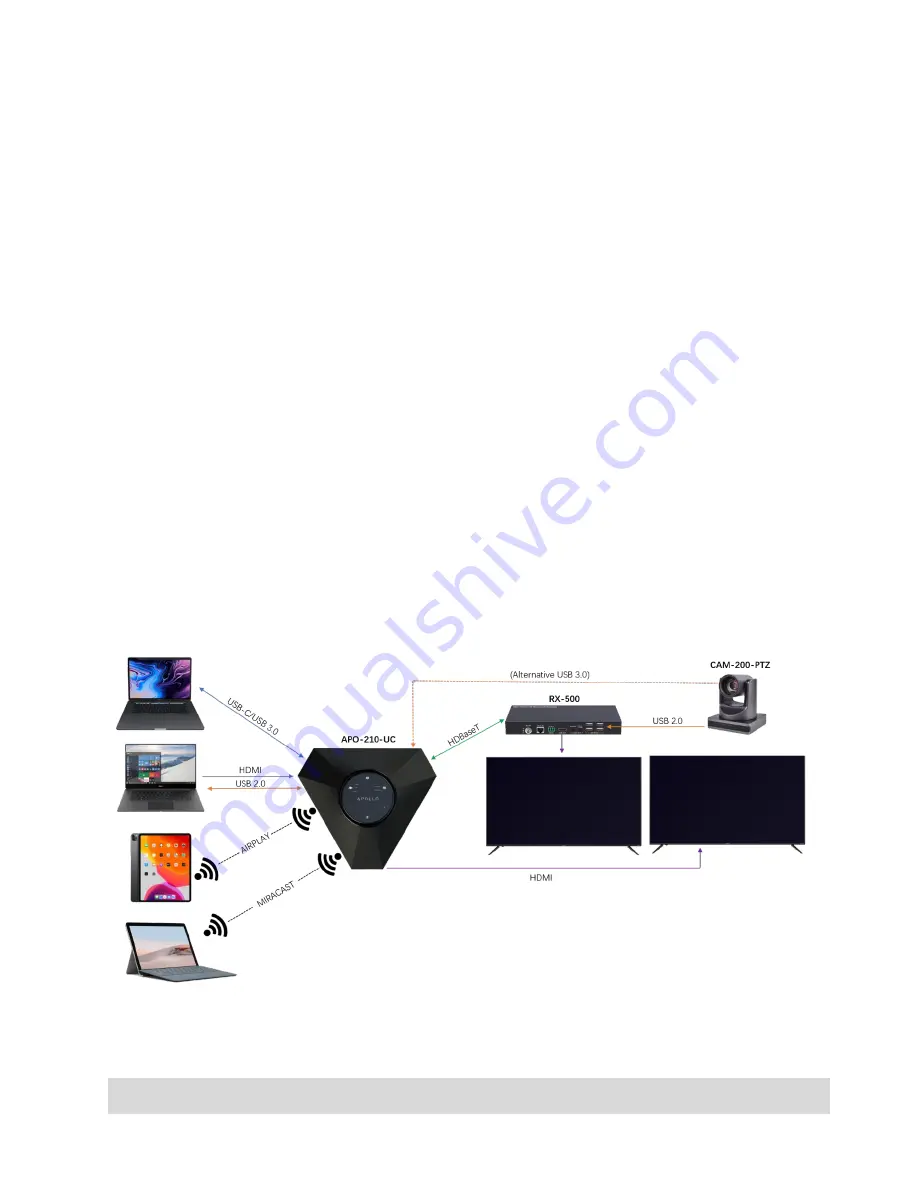
Copyright © 2021 WyreStorm Technologies |
WyreStorm.com
Apollo User Manual | 210622
5 of 10
Technical Support: 844.280.WYRE (9973)
Support@WyreStorm.com
Control
All Apollo models have capacitive touch buttons on the center control panel. A number of options are
available such as adjusting volume and muting the microphone. On the APO-200 & APO-210 there are
options for changing the multiview mode between split screen or full screen and adjusting the USB host
switching mode. A video mute button is also available which will cut the video transmissions to the display,
useful if a user needs to access sensitive content on their device such as logging into a website or
confidential emails/messages.
Apollo features CEC auto power on/off for connected displays. When a source device is connected for the
first time, this can trigger Apollo to send a CEC command to automatically turn on the display, vice versa,
after ‘x’ amount of no sync detection Apollo can power of the display.
Specific to the APO-210, this same auto power function can be sent via RS232 over HDBaseT. Both RS232
and CEC commands can be customized using the integrated web UI.
Apollo also features an API which can be connected to via 3
rd
-party control systems. Details on this API can
be found at wyrestorm.com.
Applications
BYOD Conference Room
A BYOD (Bring Your Own Device) conference room allows users to walk into a conference room with their
own computer to host a meeting. All meeting software is hosted on the user’s personal device and is not
specific to a certain vendor (i.e., Zoom or Teams).
In this application
Apollo acts as a unification ‘hub’ which allows connection of personal devices to have
access to Apollo’s speakerphone, transmit video to a display and by extension have access to any USB
cameras that may be connected to Apollo’s USB peripheral device port
.




























